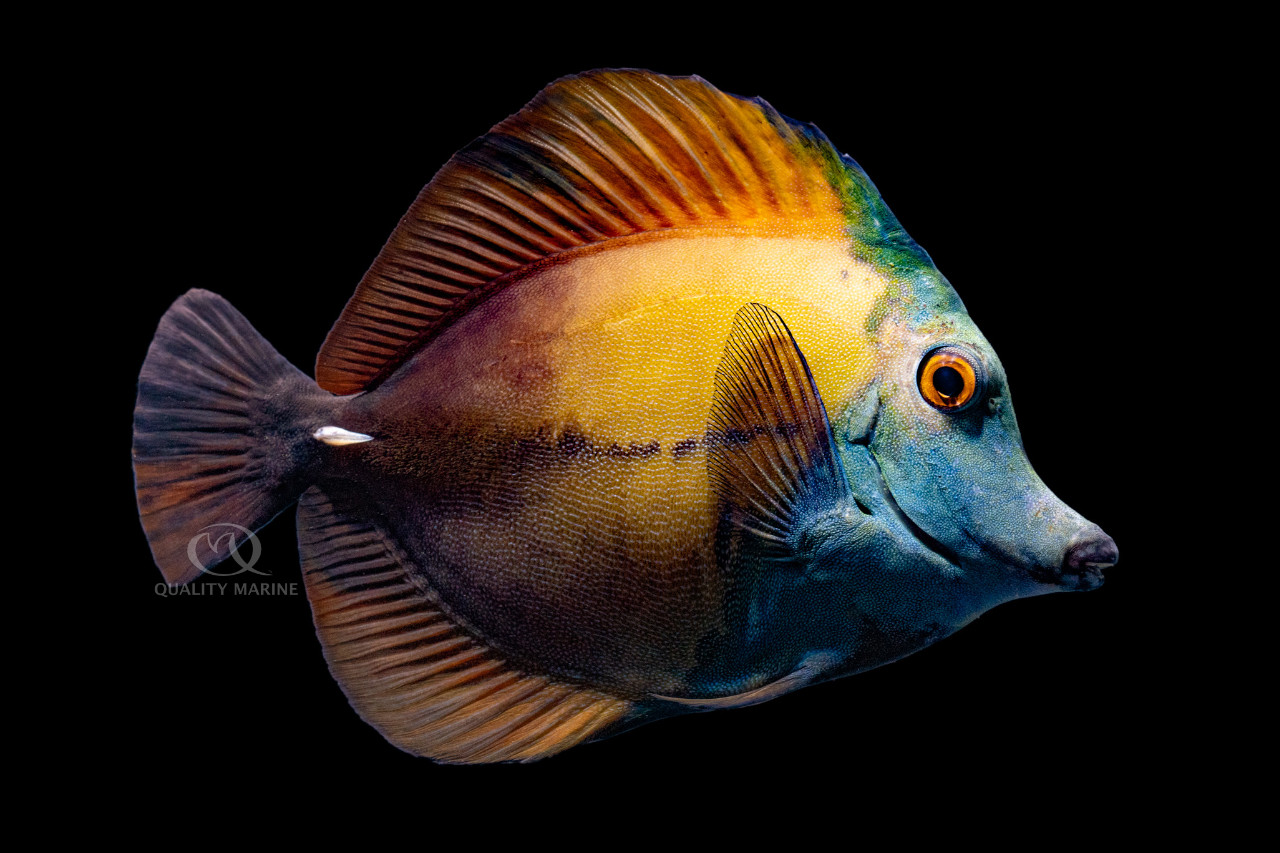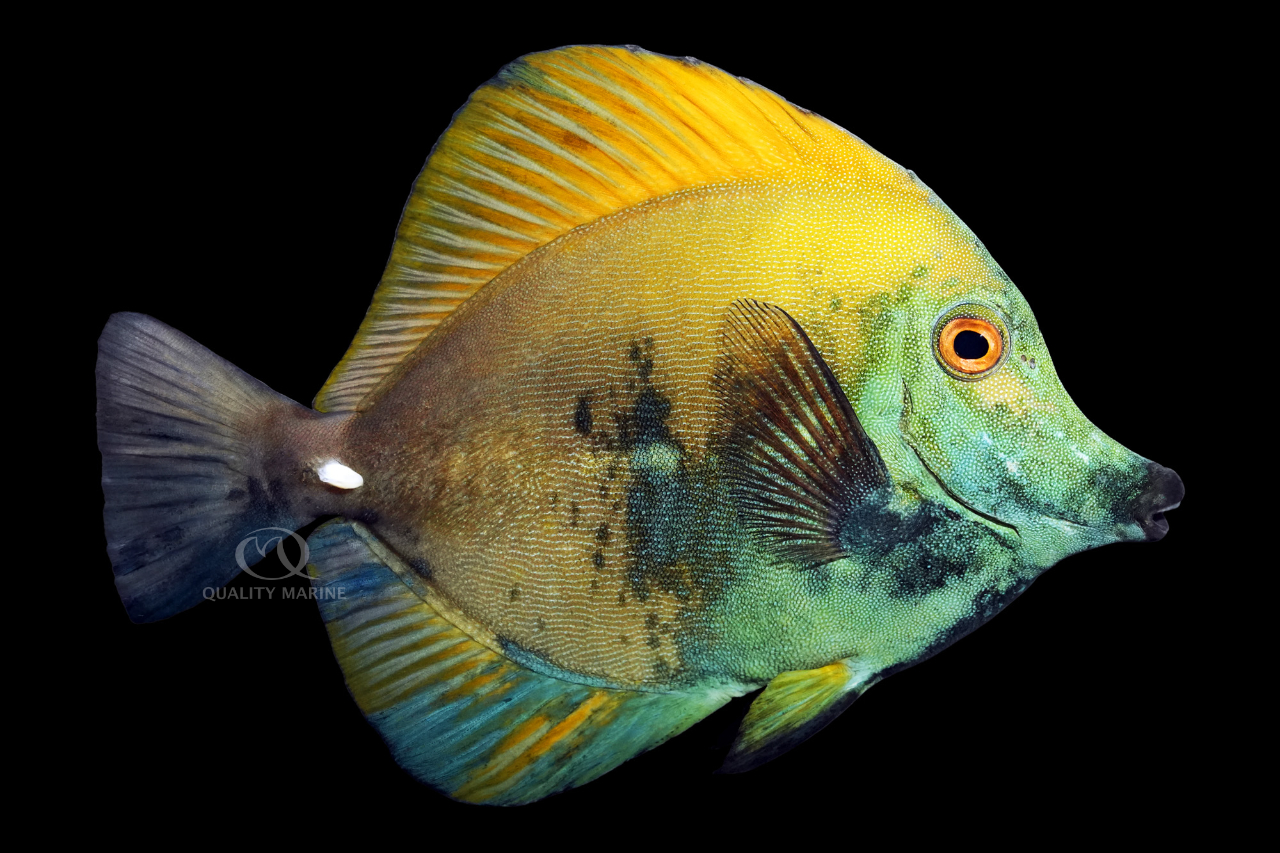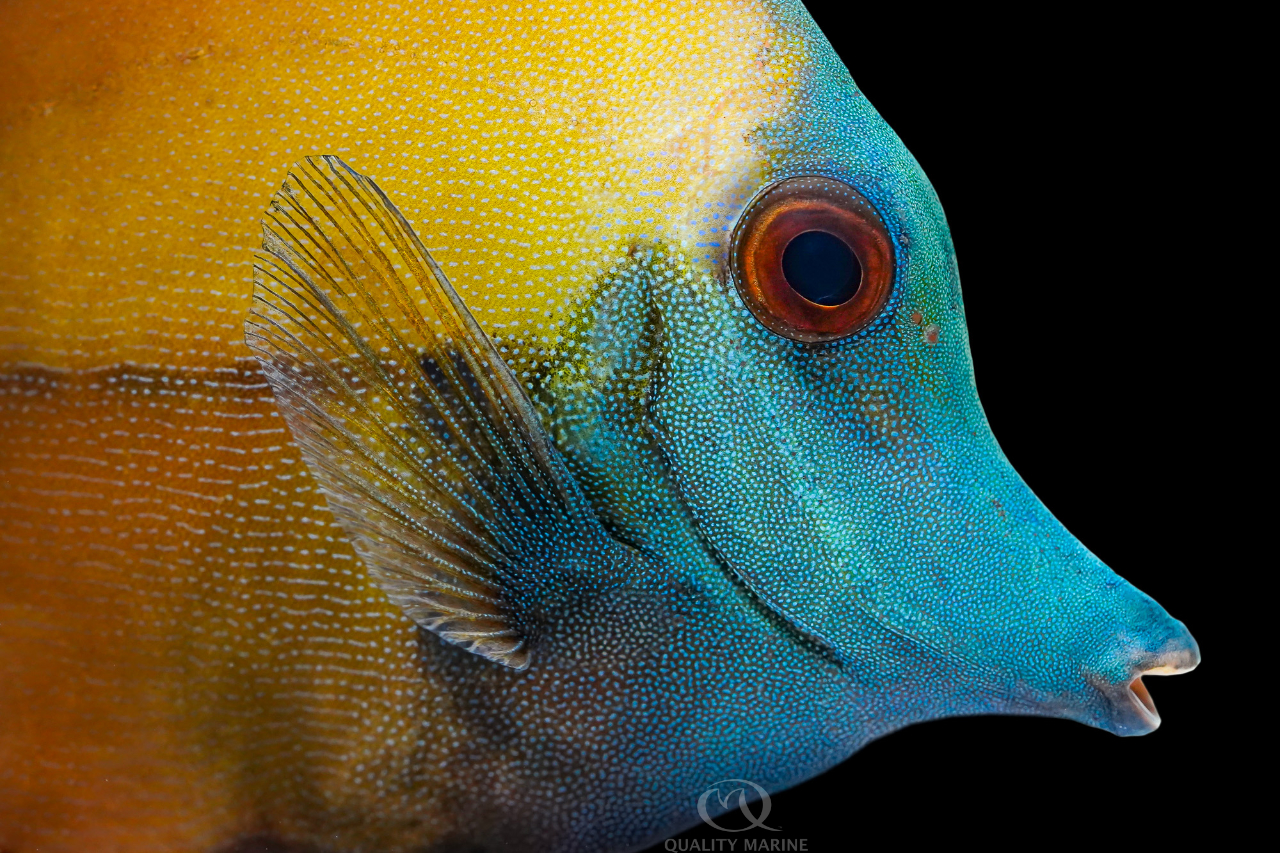Why The Blue Face?

Scopas Tangs (Zebrasoma scopas) are a top ten “highly underrated fish.” There is no comment section for you to argue against us, but you probably wouldn't anyway, because we're right and you know it. Among tangs they are some of the best choices for the home aquarium, being hardy, useful and a smaller adult size than any other fish in their genus. While all Scopas Tangs are all beautiful, their soft palate of colors doesn't resonate with everyone. That being said, every once in a while, they show up with absolutely wild coloration. This unparalleled rarity, combined with all their other desirable traits makes them an ultimate dream fish!
 These fish are often called Koi Tangs, and among these, the ones with predominantly blue faces are likely the kings of Koi. Blueface Koi Tangs aren't cheap, but no fish that has these looks and rarity is. While expensive, we can't think of a better “showpiece” fish for the vast majority of reef aquariums, given that they are over 125 gallons, which is about as small as we would go for keeping an adult Scopas tang long term. There should be lots of flow in the tank to give the fish an environment that exercises them. Rockwork should be open enough for them to have some caves and swim-through locations, but some open swimming space would be good as well. Scopas tangs are good candidates for bare bottom tanks, needing no substrate whatsoever, so you can choose whatever you'd like aesthetically, as long as it is saltwater safe.
These fish are often called Koi Tangs, and among these, the ones with predominantly blue faces are likely the kings of Koi. Blueface Koi Tangs aren't cheap, but no fish that has these looks and rarity is. While expensive, we can't think of a better “showpiece” fish for the vast majority of reef aquariums, given that they are over 125 gallons, which is about as small as we would go for keeping an adult Scopas tang long term. There should be lots of flow in the tank to give the fish an environment that exercises them. Rockwork should be open enough for them to have some caves and swim-through locations, but some open swimming space would be good as well. Scopas tangs are good candidates for bare bottom tanks, needing no substrate whatsoever, so you can choose whatever you'd like aesthetically, as long as it is saltwater safe.
We're banging the Scopas drum here again, because Blueface Koi Tangs are very hardy and adaptable. This being said, the two main challenges to keeping any Surgeonfish are stable water quality and nutrition. Pretty much all Surgeonfish do best in tanks with very low nitrates (and obviously, ammonia and nitrite should be below the testing threshold). To this end, strong filtration, and regular water changes are the way to keep your Blueface healthy. As far as food, nutrition is likely even more important than water quality. They'll need both adequate vegetation AND protein. A nutritious pellet with a balance of appropriate nutrients should be the core of this diet. In house, we feed them Nutramar's Algae and Color Boost Shots, and we suggest that you do as well. In addition, we supplement this diet with Nutramar's dried algae products, both Nori and Ogo. In the wild, these tangs would graze on algae all day long, and their digestive systems need it to keep the fish in good health. Don't skimp on the algae.
The individual water chemistry parameters are less important than the stability of them. Your tank could have a specific gravity anywhere from 1.020 to 1.026, a temp anywhere from 70 to 78 Fahrenheit as long as they were both stable. Often, pH is the hardest thing to maintain, and you'll want to keep yours within 0.2 of 8.2. two tenths swing in daytime to nighttime pH is actually pretty good in the home aquarium and will be just fine for your Blueface Koi Tang.
The Blueface Koi Tangs, are certainly on the list for “best choice for keeping a tang in the home aquarium.” They are model citizens to most fish that come into the aquarium, though they might be a bit pugnacious with other tangs. Other tangs sharing an aquarium with Blueface Koi Tangs has been successfully done, and will be again, it just takes some forethought. Take steps like adding tangs at the same time, reorganizing rockwork when adding new fish, etc.
A quick google search will show you some discrepancies when people write on the topic of how large a Blueface Koi Tang can get. As there isn't a gamefish size record out there, we have to rely on captive fish measurements and fish harvested for science. In the end, the absolute largest size a fish could get isn't a reasonable way to see how big it is likely to get. The largest Blueface we've seen was a dozen inches long give or take a bit. At adulthood, your Blueface is much more likely to max out somewhere in the seven-to-nine-inch range. Still, a sizable aquarium will be needed for this fish to be healthy throughout its life; hence why we say a 125 gallon should be the goal for keeping one to adulthood.
Many different colors of Scopas have been found across their vast native range. Everything from Pure black, to yellow and white or yellow and black, and even plain yellow versions of Scopas tangs have been collected (though all the aberrant colors are very rare.) Conversely, the Blueface Koi Tangs almost always come from a much tighter range. The question on our mind (and should be on yours too) is “why do these Blueface look so wildly different?”
 Several theories exist about why, and all are still being debated. Perhaps it is a fungal infection? Or some fish version of vitiligo, though this usually just causes a lightening of skin in blotchy areas and wouldn't explain the crazy multicolored patterns we're looking at on the Blueface Koi. Another theory is that the fish have a genetic condition called “oligomelany” where fish (and reptiles) can produce color, but it gets unevenly distributed. This explanation is better, though fails to explain the multiple colors that express on these tangs in addition to the base colors. The horse world has several different names for multicolored animals like “piebald,” “skewbald,” “pinto,” and more, though all these coloration anomalies are permanent, whereas the Koi Tangs sometimes change color!
Several theories exist about why, and all are still being debated. Perhaps it is a fungal infection? Or some fish version of vitiligo, though this usually just causes a lightening of skin in blotchy areas and wouldn't explain the crazy multicolored patterns we're looking at on the Blueface Koi. Another theory is that the fish have a genetic condition called “oligomelany” where fish (and reptiles) can produce color, but it gets unevenly distributed. This explanation is better, though fails to explain the multiple colors that express on these tangs in addition to the base colors. The horse world has several different names for multicolored animals like “piebald,” “skewbald,” “pinto,” and more, though all these coloration anomalies are permanent, whereas the Koi Tangs sometimes change color!
Every Blueface Koi Tang is one-of-a-kind; they aren't even going to look like other Blueface Koi, each one will have different colors and different distributions of these colors. Every single one is a unique masterpiece that may change into crazier colors still. Although it is also possible that they could segue back into normal coloration, and a third possibility is that they may hold this color and pattern for their entire life! While there are no guarantees here, we also firmly believe that there is no aquarium fish on the planet with looks this unique. You want the ultimate claim of a fish no one else has? Then you better ask your LFS about getting a Blueface Koi Tang from Quality Marine today.